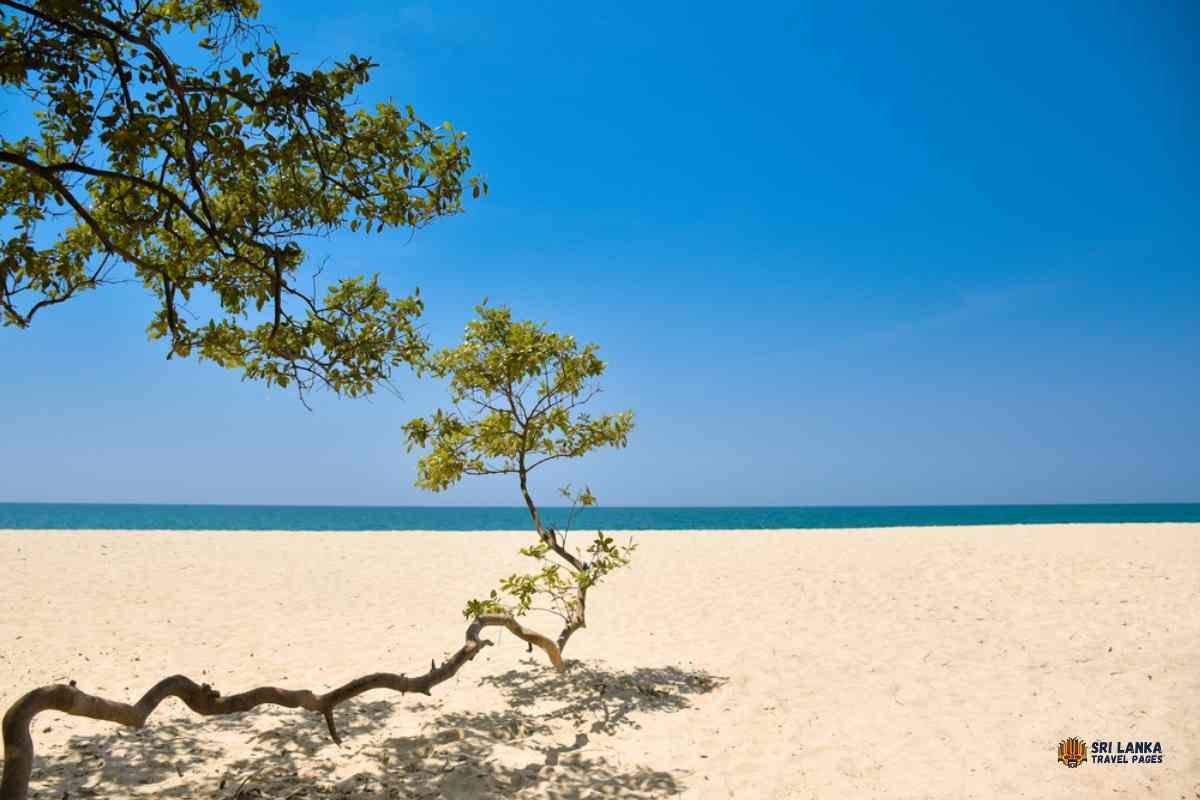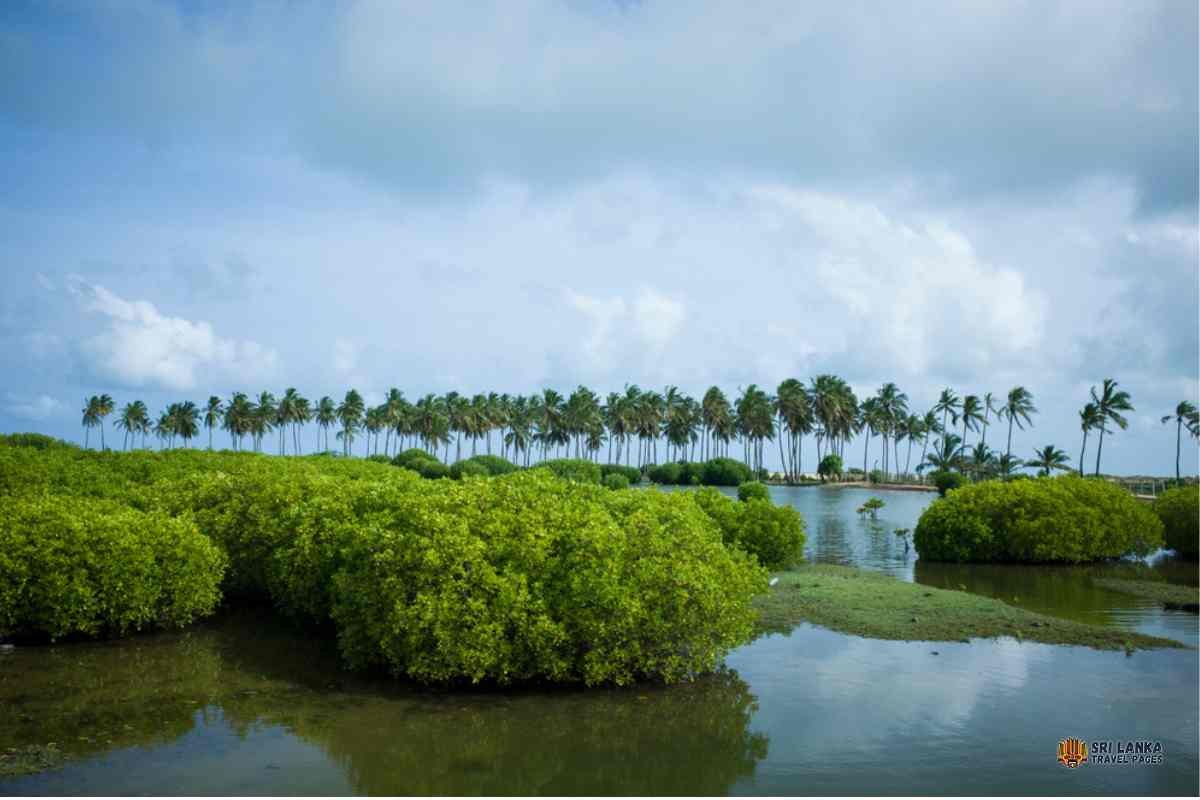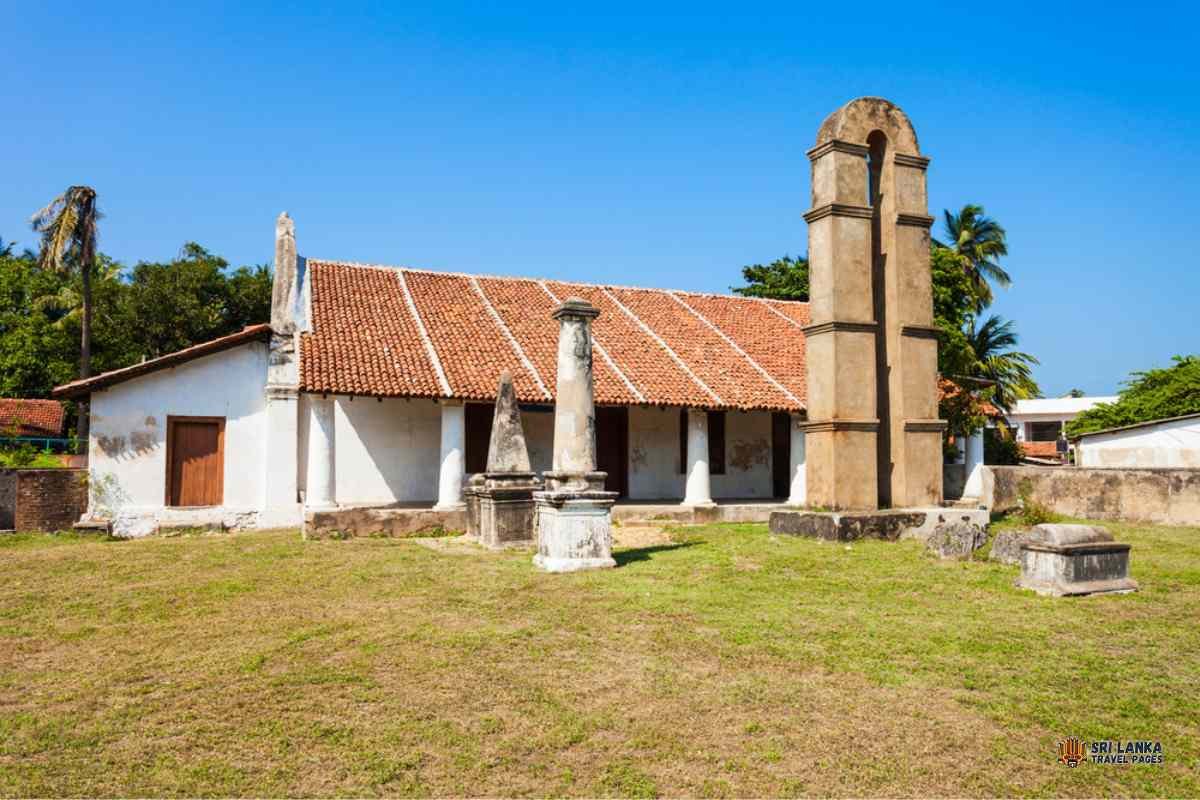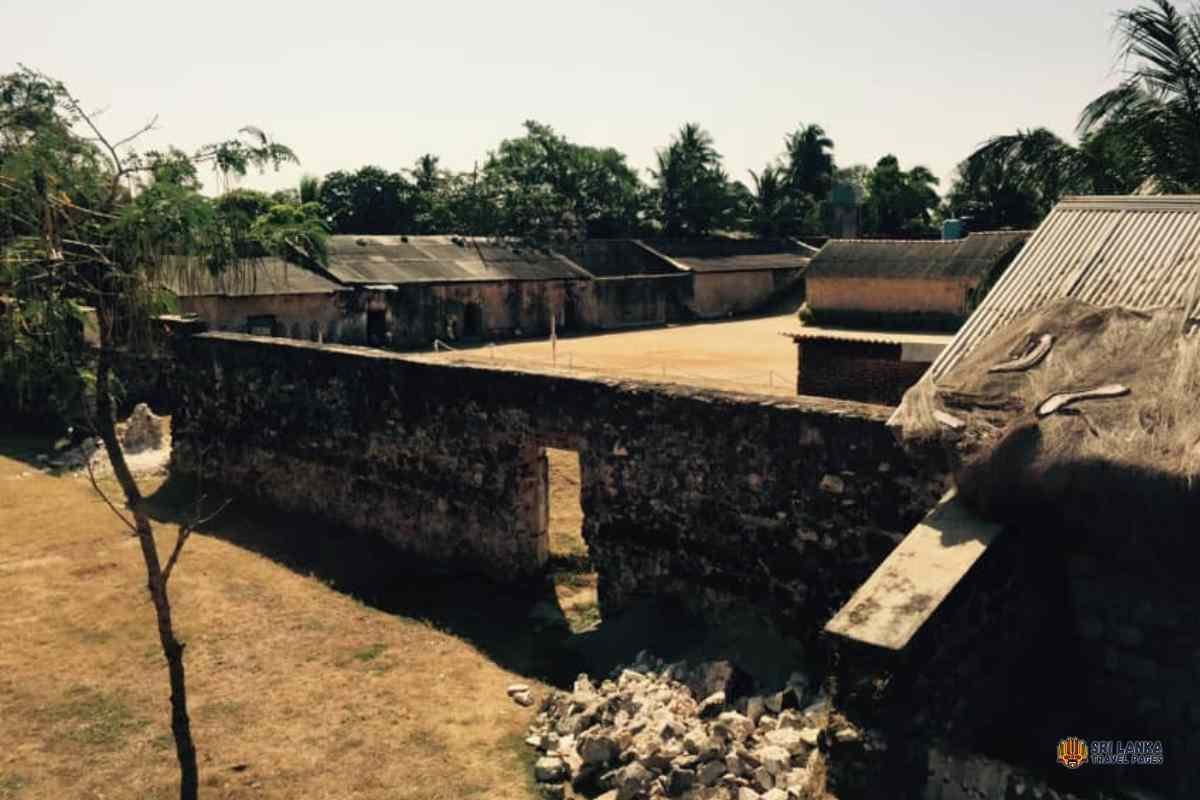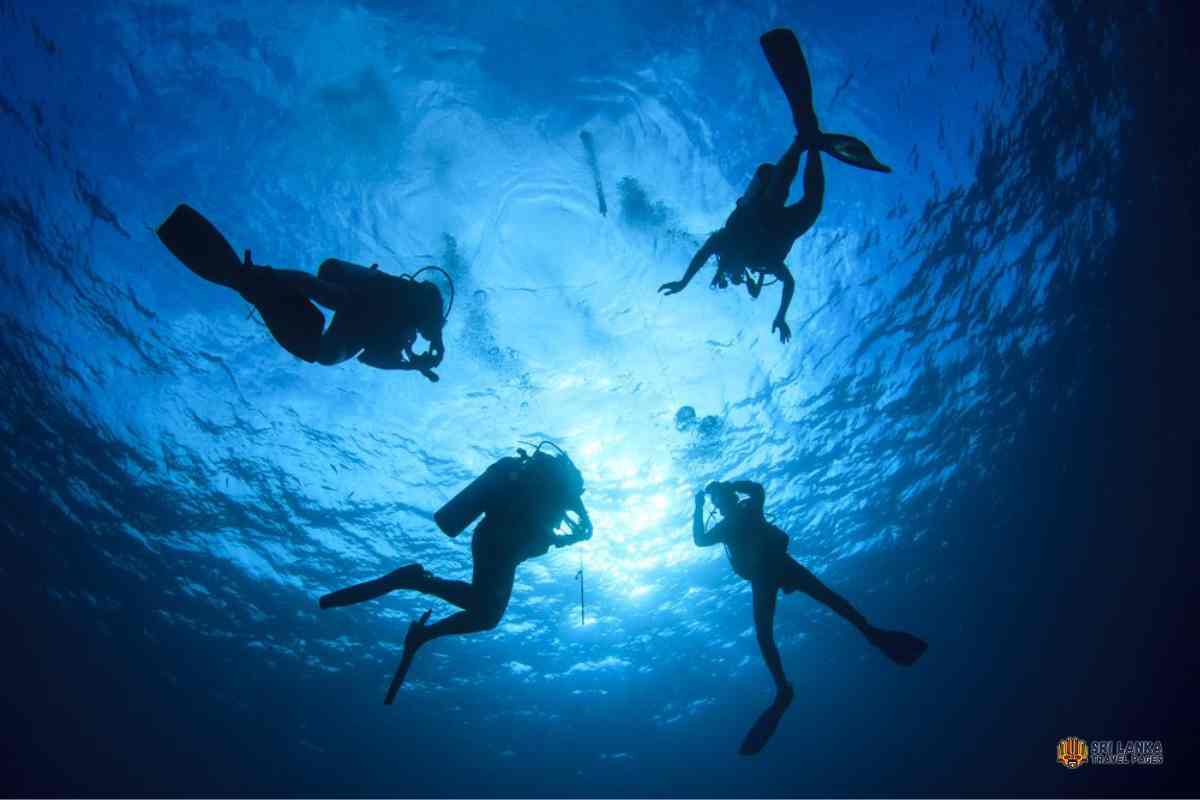
Kalpitiya is a beach town in Puttalam District’s western section of Sri Lanka. The Kalpitiya peninsula is made up of fourteen islands. Kalpitiya is generally known as the premier kitesurfing destination in Sri Lanka, inviting fans of all abilities to test the winds on an exhilarating lagoon trip.
Besides being a kitesurfing paradise, Kalpitiya is a popular destination for snorkelling, diving, and dolphin-watching trips. It comprises 14 islands, home to small fishing villages due to the abundance of marine life surrounding Kalpitiya. During your Sri Lanka vacation, take in the sights and sounds of this tranquil town. The most significant time to visit Kalpitiya Beach is during the dry season, which runs from October to May. We have listed the best 15 places to visit in Kalpitiya and things to do in Kalpitiya.
1. Visit the Island Of Baththlangunduwa
It takes roughly an hour to go to this island, which is 38 kilometres away from Kalpitiya. The boat cruise around Kalpitiya’s other islands is stunning. You could spot dolphins on this tour. People live and work on this island, which is well-known for its fishing business. Battalangunduwa becomes a tourist hotspot. Battalangundua Island is where you can have fun with friends, relatives, and family members and create unforgettable moments. More Details
2. Kalpitiya Beach
Kalpitiya Beach is one of Sri Lanka’s most well-known beaches. There’s a lot for onlookers and surfers alike with its high surrounding cliffs, deep blue ocean, strong swells, natural theatre, and varied viewpoints. More Details
3. Mangrove forest in the Kalpitiya Lagoon
The mangrove forest in the Kalpitiya lagoon in Sri Lanka, located in the Puttalam district of Sri Lanka, is a rapidly increasing tourist destination around 165 kilometres north of Colombo. The land and surrounding beaches are noted for their breathtaking sunsets and relative isolation. More Details
4. Dutch Reformed Church
The Dutch Reformed Church is in Kalpitiya. During the colonial era in the early 16th century, the Portuguese attacked the town. As a result, it was renamed Kardiv Island and given to the Society of Jesus by King Manuel II of Portugal.
King Rajasinghe II, the sovereign King of Kandy, replied to the Dutch for assistance in reclaiming his realm from the Portuguese. As a result, the Dutch seized the region in 1659, but instead of returning the town to the king, they erected a fort finished in 1676. Kalpitiya was a strategically important place for the Dutch to control the Kingdom of Kandy’s foreign commerce. Therefore, they constructed a little church 350 metres from their fort.
The Dutch evacuated to Colombo after the British conquered the island towards the end of the 18th century. Except for one Dutch administrative officer who surrendered to the British, the fort had been evacuated. The church’s services were suspended, and Anglican missionaries later utilised the edifice. The church was renovated circa 1840, and the ancient belfry still stands. The Archaeological Department of Sri Lanka administered the church until 2010 when it was handed over to the Dutch Reformed Church. More Details
5. Dolphin and Whale watching – Kalpitiya
Kalpitiya is one of the finest places in Sri Lanka to go dolphin and whale watching. Kalpitiya allows you to observe many dolphins swimming beside and under your boat, riding waves, jumping, to spin, twirling, and jumping out of the water in a beautiful show; it is a magnificent trip you will never have forgotten in your life. The dolphin-watching season runs from October through May. The ideal months for whale watching are February/March/April. However, you may be able to see whales during dolphin season as well.
6. Wilpattu National Park
The principal topographical feature is the concentration of “villus” or “lakes” inside this park. Though limited to a single park region, the noticeable characteristic is the widely variable copper red, loamy soils. The park’s western part, densely wooded areas and thorny shrubs are reminiscent of Yala National Park in southern Sri Lanka. It is distinguished by intermonsoon rainfall in March and April, substantial dryness from May to early September, and a sizeable rainy season (Northern Monsoon) from September to December. According to long-term data, the mean annual temperature is 27.2° C, and the yearly rainfall is roughly 1000mm.
Three types of vegetation can be identified: Littoral vegetation, comprising salt grass and low brush along the shore. A total of 31 mammal species have been documented; however, different Rodentia and Chiroptera species are undoubtedly present. Common reptiles are among the most important. More Details
7. Kudawa beach
Kudawa beach is a hub for a range of water sports ranging from kitesurfing to boat excursions, and it is ideal for some peaceful time away from the city’s regular hustle and bustle. Kudawa Beach is best visited between December and April when the waves are quiet, and the winds are gentle.
8. Kalpitiya Dutch Fort
Kalpitiya was originally a popular stopping point for travelling Arab traders. However, the Portuguese captured the settlement and renamed it Kardiv Island in the mid-16th century. The ruling monarch of Sri Lanka at the time, King Rajasinghe II of the Kingdom of Kandy, sought assistance from the Dutch in retaking his realm. The territory, however, was not restored to the monarch during the Dutch conquest. Instead, the Dutch began building a fort, which was finished in 1676. The position was strategically vital since it allowed the Dutch East India Company to dominate the foreign commerce of the Kingdom of Kandy.
The fort is a square-shaped building with walls up to 4 metres high built from coral and limestone from the surrounding region. It has bastions at each of its four corners. The British seized the fort in 1795 and occupied it until the mid-nineteenth century when it was abandoned in 1859. During Sri Lanka’s decades-long civil war, the fort served as a training and operations base for the Sri Lankan Navy.
9. Kayaking at Kalpitya
In Kalpitiya, you may have an incredible kayaking adventure. Our kayaking excursions will take place in either the Kalpitiya or the Kappaladi lagoons. Paddle through the mangroves to observe wildlife and a beautiful mangrove system.
10. Scuba Dive in Kalpitiya
The Kalpitiya peninsula is one of Sri Lanka’s newest tourism destinations and a popular scuba diving destination. The lengthy stretch of the beach area, reefs, and the most significant diversity of marine life in Kalpitiya are some factors that draw tourists to the region for scuba diving.
11. Kitesurfing Kalpitiya
Nine months of the year, Kalpitiya receives consistent and dependable wind. With 14 lagoons offering the greatest kite surfing sites in Sri Lanka and circumstances suitable for both beginners and independent riders, Kalpitiya is also renowned as the wind capital of Asia.
Kalpitiya Kitesurfing Centers
12. Kudiramalai Point
Kudiramalai Point is located near Wilpattu National Park; this point possesses a rich culture where a historic port city once stood. At this moment, Prince Vijaya arrived in Sri Lanka by mistake. There are spots where you may see black sand and many corals above sea level. More Details
13. St. Anne’s Church – Thalawila
St. Anne’s Church in Thalawila is one of Sri Lanka’s oldest and most beautiful Christian sanctuaries. Founded in the heart of tradition and sanctity, hundreds of pilgrims gather in this beautiful sanctuary of isolation and peace throughout the Christmas season and in March and August. The St.Church Anne’s is close to Kalpitiya and simple to reach, with decent roads and peaceful views of Talawila Beach.
14. Bird Watching in Kalpitiya Lagoons
Mangrove forest in the Kalpitiya lagoon in Sri Lanka, located in the Puttalam district, is a fast-growing tourism destination around 165 kilometres north of Colombo. The land and surrounding beaches are noted for their breathtaking sunsets and relative isolation. Also best suited to bird watchers.
15. Alankuda Beach
Situated between Kalpitiya and Puttalum, Alankuda Beach is a serene oasis, beckoning individuals seeking peace and aquatic experiences. Thanks to its reef, which is around 4 kilometres offshore, this coastal jewel, located about 110 kilometres north of Bandaranayake International Airport, has some of Sri Lanka’s calmest and safest waters. Alankuda Beach, which stretches a spotless 2 km, offers a haven from the frenetic pace of everyday life. More Details
Suggested Read : Places to visit in Colombo
Places to Stay In Kalpitiya
Kalpitiya, a hidden gem on Sri Lanka’s northwest coast, offers a unique blend of natural beauty and adventure. Known for its pristine beaches, vibrant marine life, and thrilling water sports, Kalpitiya is the perfect destination for those seeking both relaxation and excitement. Whether you’re looking for budget-friendly accommodations, luxury resorts, or family-friendly stays, Kalpitiya has something for everyone. Many of the best places to stay are located near the top attractions, such as the Kalpitiya Lagoon, Bar Reef, and Wilpattu National Park, making it easy to explore the area’s highlights.
For travelers who appreciate amenities, you’ll find accommodations with pools, gyms, and dining options that cater to vegan and vegetarian diets. Whether you prefer a beachfront bungalow or an eco-friendly lodge, Kalpitiya offers a range of options that promise a memorable stay.
Below, search through our booking partner, Booking.com, to find a selection of the best places to stay in Kalpitiya to help you plan your perfect getaway.
Also Read
The 20 Best Places for Snorkelling in Sri Lanka
Sri Lanka, an island paradise in the Indian Ocean, is a haven for snorkelling enthusiasts.…
Hiriwadunna Village Tour: A Guide to the Ultimate Tour Experience
Are you seeking a unique travel experience that blends nature, culture, and adventure? Then, look…
How to Reach Yala National Park
Yala National Park, Sri Lanka’s premier wildlife sanctuary, is renowned for its diverse ecosystems, abundant…
Discover more Cities in Sri Lanka

Ravindu Dilshan Illangakoon
As co-founder and Head of Content at Sri Lanka Travel Pages, I ensure that every blog post we publish is AMAZING.

